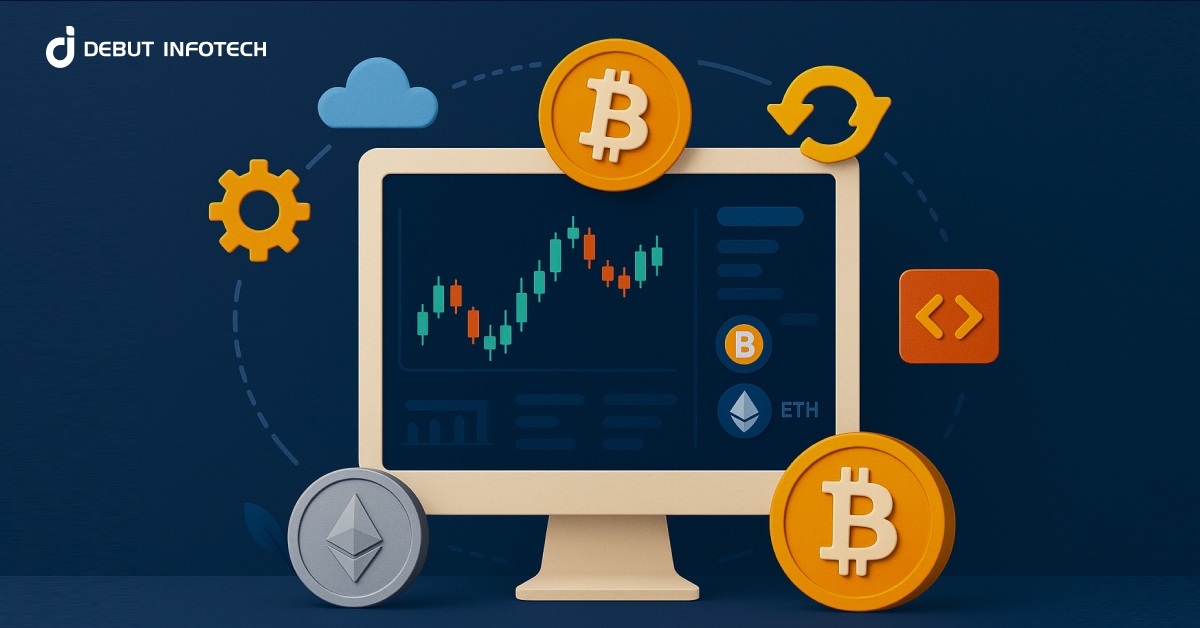The cryptocurrency exchange landscape is evolving rapidly, with trading volumes and user expectations growing every year. To stay competitive, building a robust, scalable, and secure crypto exchange requires more than just an idea—it demands the right technology stack.
Whether you're developing a P2P crypto exchange, an OTC crypto exchange, or using white label crypto exchange development, the tech stack determines your platform’s performance, security, and scalability. Let’s explore the essential components and best practices for choosing the right tech stack for cryptocurrency exchange software development in 2025.
Understanding the Importance of the Tech Stack
A tech stack is the combination of programming languages, frameworks, databases, and tools used to build your crypto exchange. The ideal stack ensures high performance, seamless transactions, enhanced security, and efficient scalability.
Choosing the wrong technology stack can result in slower performance, a poor user experience, and vulnerabilities — all unacceptable in financial-grade systems.
Key Components of a Cryptocurrency Exchange Tech Stack
1. Front-End Technologies
The front end defines how users interact with your platform. It must be intuitive, responsive, and fast-loading.
Recommended Technologies:
- Languages: HTML5, CSS3, JavaScript
- Frameworks: React.js, Angular, or Vue.js
- Tools: TypeScript for scalability and maintenance
A user-friendly and visually appealing interface is vital for both p2p crypto exchange development and OTC crypto exchange platforms.
2. Back-End Technologies
The back end is the backbone of your exchange — managing transactions, user authentication, wallets, and trade matching.
Recommended Technologies:
- Languages: Node.js, Python, or Go
- Frameworks: Django, Express.js, or Spring Boot
- Databases: PostgreSQL, MongoDB, or Redis for high-speed data handling
The backend should support crypto exchange margin trading and liquidity management without compromising performance or uptime.
3. Blockchain Integration Layer
This layer connects your exchange to the blockchain network, enabling deposits, withdrawals, and real-time balance updates.
Blockchain Options:
- Ethereum: For ERC-20 tokens and smart contracts
- Bitcoin: For BTC transactions
- Binance Smart Chain / Polygon: For scalability and low fees
Integration should be designed to support multiple blockchains and tokens for future expansion.
4. Wallet Infrastructure
A secure wallet system is critical for handling user assets. You can integrate hot, cold, or MPC (Multi-Party Computation) wallets based on your security needs.
Recommended Practices:
- Use cold storage for bulk asset reserves.
- Implement hot wallets for fast transactions.
- Integrate multi-signature wallets to prevent unauthorized access.
Wallet integration is particularly crucial in white label crypto exchange development, where security and reliability are key selling points.
5. Security Protocols
Security is non-negotiable in cryptocurrency exchange software. A single vulnerability can lead to massive losses and reputational damage.
Essential Security Measures:
- Two-Factor Authentication (2FA)
- SSL/TLS encryption
- Anti-DDoS protection
- Database encryption
- Smart contract audits (for DeFi integrations)
For crypto exchange margin trading and p2p trading, strong encryption and KYC/AML compliance mechanisms are essential.
6. Trade Engine
The trading engine is the heart of your exchange — responsible for processing orders, matching trades, and updating balances in real time.
Recommended Features:
- High throughput (handle thousands of transactions per second)
- Order matching algorithms
- API integration for market makers and liquidity providers
- Real-time price feeds
For exchanges that include OTC crypto exchange functionality, ensure the trade engine supports bulk orders and customized trade terms.
7. APIs and Third-Party Integrations
APIs enable your exchange to interact with liquidity providers, payment gateways, and external trading platforms.
Types of APIs to Integrate:
- Liquidity APIs
- Price feed APIs
- Payment gateway APIs
- KYC/AML verification APIs
Proper API management ensures your exchange remains flexible, scalable, and compliant.
Tech Stack Examples for a Modern Crypto Exchange
Example 1 (Scalable Exchange):
- Frontend: React.js + TypeScript
- Backend: Node.js + PostgreSQL
- Blockchain: Ethereum, Polygon
- Security: JWT, SSL, Firewalls
Example 2 (Enterprise Exchange):
- Frontend: Angular
- Backend: Go + Redis + MongoDB
- Blockchain: Bitcoin, BNB Chain
- Security: 2FA, DDoS protection, smart contract audits
Choosing Between Custom and White Label Development
If your business aims to launch quickly and at minimal cost, white-label crypto exchange development offers pre-built solutions with customizable features and branding.
However, for enterprises with unique requirements such as crypto exchange margin trading or p2p crypto exchange development, building a custom exchange ensures full control, scalability, and flexibility.
Conclusion
Choosing the right tech stack is a strategic decision that directly impacts your exchange’s performance, security, and long-term success. Partnering with an experienced cryptocurrency exchange development company ensures that your exchange is future-ready, scalable, and compliant with global standards.
Whether you’re building an OTC crypto exchange, P2P trading platform, or leveraging white label crypto exchange development, the right technology foundation will empower your business to thrive in the fast-paced crypto economy of 2025 and beyond.






Comments